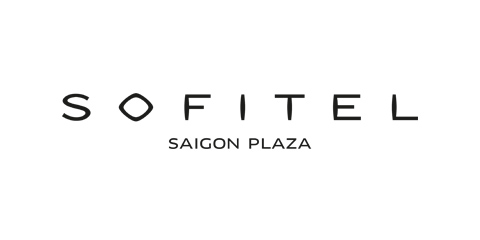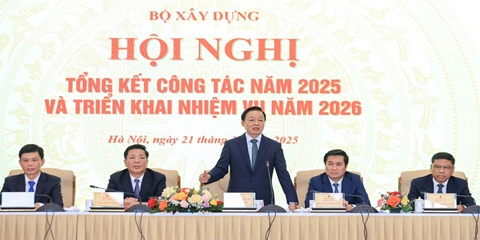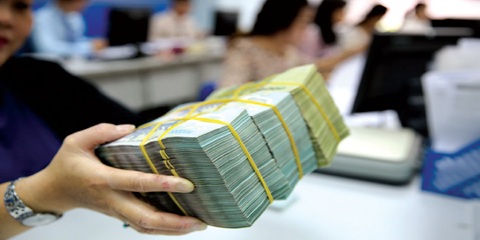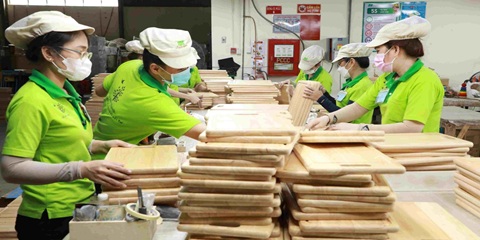Want to be in the loop?
subscribe to
our notification
Business News
ECO-INDUSTRIAL PARKS: SUSTAINABLE APPROACH TO VIETNAM INDUSTRIAL DEVELOPMENT
Eco-industrial parks in Vietnam are one solution for green growth and sustainable development. Developing an eco-industrial park helps improve economic performance while minimizing environmental impacts, improving resource efficiency, reducing waste, and fostering green industry development.
Rapid industrial development and mushrooming industrial zones are generating waste with negative impacts on the environment and human health. According to statistics, 13% of current operational industrial parks have no wastewater treatment plants and 18% of industrial waste is hazardous. Dirty emissions have a great impact on the living environment of communities surrounding industrial parks and export processing zones.
In that context, developing eco-industrial parks is a right approach for environment- friendly and society-conscious sustainable production. Accordingly, the amount of resources consumed will be decreased while economic growth and business performance in eco-industrial parks are not affected.
Three basic elements of an eco-industrial park are environmental management and resource efficiency, cleaner production in each tenant in the industrial park, and industrial interdependent networks of tenants and green infrastructure in the industrial park. Eco-industrial parks have been successful in many countries such as China, South Korea, Japan, the United States, Australia and many European countries.
The Government’s Decree 82/2018/ND-CP dated 22 May 2018 on management of industrial parks and economic zones, effective from July 2018, is the first legal document in Vietnam to lay the foundation for the transition from conventional industrial parks to eco-industrial parks.
Ms. Tuong Anh, representative to the authors of the Technical Guidance Report on Vietnam Eco-Industrial Park, said, if an industrial park recycles and reuses wastewater for production, it can reduce by 40% wastewater discharged into the environment and reduce input clean water costs. Similarly, the opportunity to recover heat from waste to produce hot water and steam for factories in the industrial park will help cut combusting fuel by 20-40%. The symbiotic industrial solution in the eco-industrial park is also one of practical tools for the circular economy for sustainable development.
Currently, the Ministry of Planning and Investment and the United Nations Industrial Development Organization (UNIDO) are deploying the project on “Implementation of eco-industrial park initiatives for a sustainable industrial park model in Vietnam”. The project was launched in 2014 with a total non-refundable funding of more than US$5 million, financed by the Global Environment Facility (GEF) and the Swiss Government through the State Secretariat for Economic Affairs (SECO) in the Global Program for Resource Efficient and Cleaner Production (RECP).
After five years of pilot phase in Khanh Phu Industrial Park (Ninh Binh Province), Hoa Khanh Industrial Park (Da Nang City) and Tra Noc Industrial Parks 1 and 2 (Can Tho City), the project offered more than 900 solutions for effective resource efficient and clean production. These solutions helped businesses save more than VND76 billion (US$3.3 million) a year as a result of reduced consumption of resources and materials. Specifically, they saved more than 22,000 MWh of electricity, 600,000 cubic meters of clean water and more than 140TJ (Terajoule) of fossil fuels, and avoided nearly 3,600 tons of chemicals and wastes. Environmentally, these cuts helped reduce 32 kilotons of carbon dioxide annually.
Particularly, according to a preliminary pilot assessment, all eight joining companies in Hoa Khanh Industrial Park saved 5-10% of electrical energy and 3 -5% of water, reduced carbon dioxide emission by 510.1 tons a year, COD by 95 kilogram a year and Teq PCDD/F by 51.1 µg a year. These companies implemented symbiotic industrial models with six symbiotic solutions (heat, water and solid waste); started to use waste from other companies as inputs for their production or utilize excess heat and energy in production to share with nearby companies. The above results show great potential in saving resources in industrial zones in Vietnam and gradually forming ecological industrial parks.
Following positive results of the first phase and scaling up the application when the legal corridor for eco-industrial parks is established, the Ministry of Planning and Investment proposed building and implementing the second-phase project for at least three years, including six components on strengthening policies and guidelines on eco-industrial parks, building capacity and institutions, conducting feasibility studies on eco-industrial park development tools, improving access to finance and investment for eco-industrial parks, building eco-industrial parks and sharing knowledge.
Needless to say, applying the eco-industrial park model in Vietnam is one solution towards sustainable development. To develop and scale up this model in Vietnam, the policy system plays an extremely important role.
Source: VCCI
Related News

A STELLAR CHRISTMAS AT SOFITEL SAIGON PLAZA
Experience the magic of year-end celebrations in five-star luxury, where Parisian elegance meets Saigon’s festive vibrancy. Discover your Stellar Christmas moments: https://sofitel-saigon-plaza.com/festive-offer-2025

CONSTRUCTION SECTOR POSTS OVER 9% GROWTH IN 2025
Industries under the ministry’s management accounted for an estimated 17.23% of national gross domestic product (GDP), up about 0.17 percentage point from 2024. They contributed around 1.96 percentage points to overall GDP growth, reported the Vietnam News Agency. The contribution helped push Vietnam’s economic growth to above 8% in 2025 and supports the Government’s aim of pursuing double-digit growth in the coming years.

VIETNAM PUTS PUBLIC INVESTMENT DISBURSEMENTS AT VND603.6 TRILLION
Vietnam’s public investment disbursements had amounted to VND603.6 trillion in the year to December 18, equivalent to 66.1% of the plan assigned by the prime minister. According to the Ministry of Finance, actual disbursements by December 11 had totaled VND577.7 trillion, or 63.3% of the prime minister-approved plan of VND913.2 trillion, the Vietnam News Agency reported.

SHINE INTO 2026 AT HOIANA RESORT & GOLF!
This New Year’s Eve, celebrate where the sea meets the sky. Vibrant performances, festive dining, DJ beats, live bands and dazzling fireworks come together for one unforgettable night. From beachfront countdown moments to curated New Year’s Eve dinners across Hoiana, every detail is designed to welcome 2026 in style.

VIETNAM’S TRADE SET TO SURPASS US$900 BILLION FOR FIRST TIME
Vietnam’s total import-export turnover is expected to reach about US$920 billion by the end of the year, marking the first time the country’s trade value has exceeded the US$900-billion mark. As of December 15, Vietnam’s total trade turnover stood at US$883.7 billion, according to the Agency of Foreign Trade under the Ministry of Industry and Trade.

GLOBAL SOURCING FAIR VIETNAM 2026 – THE TRULY GLOBAL B2B SOURCING SHOW IN VIETNAM TO EXPAND & DIVERSIFY YOUR EXPORT MARKETS WORLDWIDE
The 4th edition of Global Sourcing Fair Vietnam returns in 2026 with an impressive scale, featuring 700 booths showcasing Fashion & Accessories, Home & Gifts, and the newly introduced Printing & Packaging Products from 500+ verified suppliers across Vietnam and Asia – including Mainland China, Taiwan, Hong Kong SAR, South Korea, India, Bangladesh, ASEAN, and more.
























